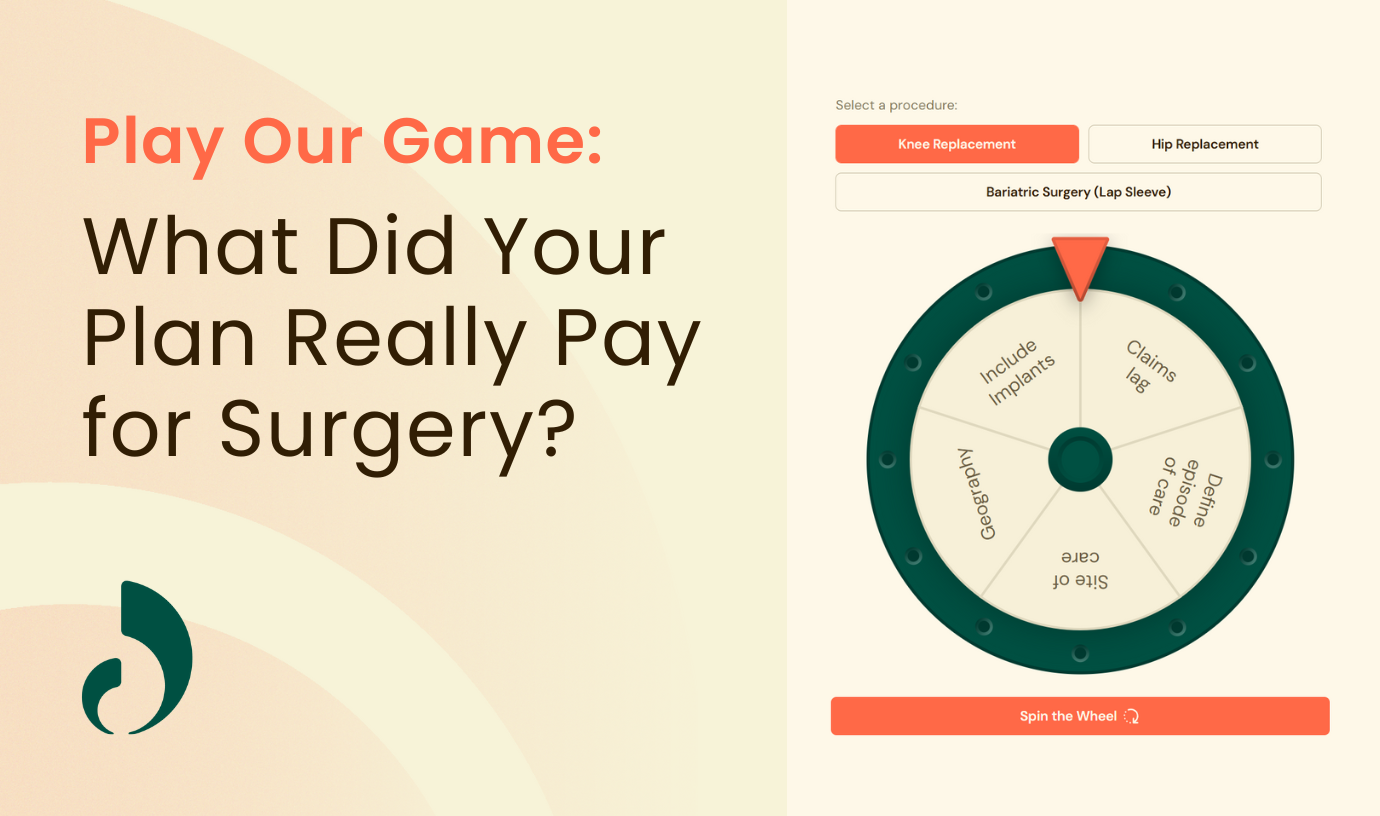If you have a Centers of Excellence as part of your benefits strategy, chances are you’re not getting the results you want. Traditional solutions often require traveling for specialty care like surgery or cancer care, support a limited number of procedures, and have few incentives to use them. With low (or even no) member engagement, employers, unions and multi-employer trusts just don’t see the savings they’re looking for.
Specialty care drives 50% of healthcare costs, however, and benefits leaders realize a COE program must be part of their strategy to lower costs and improve health outcomes. In this webinar, we talked to two innovative benefits leaders who are seeing big results after rethinking their approach to specialty care.
In this webinar, you’ll hear from:
- Shelly Towns, Chief Marketing Officer, Lantern (Moderator)
- Tabitha Pittman, Director of Compensation and Benefits, Integrity
- Sara Richards, Director, Benefits, Red Bull
Key takeaways:
- What to look for in a COE solution that reduces your top areas of spend, not just for a handful of procedures
- How to find a COE solution with a consistent definition of quality that you can trust—and why this matters
- How to build a creative, impactful employee benefits communication strategy that drives engagement
Quality Care is Missing from Your COE Strategy
It may be surprising, but a standard definition for what makes a COE excellent doesn’t exist. Yet benefits leaders understand that quality care leads to better health outcomes, happier employers and savings. When polled, 45% of our webinar attendees said high-quality surgeons were their MOST important consideration when choosing a COE.
Sara Richards, Red Bull’s Director, Benefits, said they wanted a solution that offered quality providers who reduced readmissions and limited complications. Traditional COEs, however, often steer employees to specific facilities for specialty care, not to specific providers. “Certifying or qualifying at the facility level isn’t enough,” said Shelly Towns, Chief Marketing Officer at Lantern. “Even at the best hospitals, you’re going to have a curve. Some providers are great, some you’d never want to see again, and some are in the middle. Quality really starts at an individual specialist level. We put in a process with 250 criteria to qualify every surgeon at an individual level and then look at the facility.”
This was important to Richards and Tabitha Pittman, Director of Compensation and Benefits of Integrity, because ultimately, their people come first. “We know that Lantern is looking at the right metrics,” Richards said. “And you’re staying on top of making sure those surgeons maintain those quality levels.”
Quality care within a COE also comes down to helping to guide your people to the best care and offer them a great experience. “That highly tailored, qualitative approach that the member experiences was important to me,” Pittman said. “Lantern Care Advocates say, ‘I am going to help you navigate this challenge.’ The Lantern team works as an extension of ours with service at the heart of everything.”
Easy Access to Care is Missing from Your COE Strategy
COEs often require members to travel to get care, but most people don’t have the time, don’t want to take off work and will avoid a procedure, even if it is necessary.
Richards said 80% of their population works in warehouses and in delivery, so having to travel for care makes it difficult to get their work done and routes completed. She said in 2024, 87% of their employees were able to drive to get surgery through the Lantern network. “That is huge,” she said. “When you tell someone you need to get on a plane, that’s when they start pushing back. [Local access] eases those points of friction. It reduces barriers.”
COE solutions that are part of a carrier plan typically cover a few complex procedures, but it’s important to look for a program that expands coverage for other procedures like colonoscopies and tonsillectomies. All of these small procedures add up. “For colonoscopies, injections, anything in the MSK world, we’re like, ‘Just make the call to Lantern and check it out,’” Pittman said. “And now, it’s really just started to advertise itself. Because employees have a great concierge at Lantern that helps them navigate all of this, it feels like a less heavy lift. They can stay in the health plan and be seen locally, but most have opted in to the higher level of quality.”
Incentives are Missing from Your COE Strategy
To increase utilization of your COE, it’s important to determine how you want to design your plan. Will you waive cost share for members who use your COE? Will you require that members use the program for certain procedures? What kind of guidance will you offer for complex diagnoses, like cancer?
Red Bull waives all cost share. Integrity has two plans and waives all fees for anyone enrolled in their PPO plan, and collects the IRS minimum deduction at the end of the year for employees enrolled in the high deductible health plan.
“Waiving cost share has been the number one reason this program has been successful,” Richards said. “It’s such an incredible tagline that immediately gets their attention. If you don’t waive cost share, it really takes away the momentum of the program.”
Pittman agreed, and adds you have to carefully communicate the value of the benefits. “Sometimes when something is free, it makes people skeptical,” she said. “I have made it a point of being very transparent. It’s a win-win situation.”
As part of their strategy, both Integrity and Red Bull also offer travel incentives. Richard admits adding a travel stipend wasn’t something she initially wanted to include because they were already offering free care. “The travel we’re covering, however, is still less than the savings that we’re getting, and we get a lot of positive feedback from employees. It makes a big difference when they’re already dealing with so many other hurdles for surgery or cancer care.”
Red Bull also offers its employees the Lantern cancer care program, so that employees can access the best care with a dedicated Cancer Care Advocate and social worker. “Employees are seeing the value and then coming back to me and even my leaders with their stories,” Richard says. “It’s truly one of the reasons where I’m like, ‘This is why I’m in benefits.’”
A Good Communications Plan is Missing from Your COE Strategy
Benefits leaders often must put on their marketing hat when it comes to promoting their benefits. When asked to rate their own benefits communications strategies during the webinar, however, more than a third of attendees rated it fair (32%) or poor (5%).
Richards said Red Bull gets creative in their approach when it comes to communicating their benefits like Lantern. They share bite-sized educational content on digital slides that are on TVs in their offices. The content includes QR codes employees can scan for more information. “Because we’re a different company, we get to be a little irreverent and a little bit funny. We approach it like an ad.” They also share slides and talking points to team leaders to share in their weekly huddles. Those slides also include QR codes.
Integrity promotes its benefits through their internal Wellness Connection program events, and raffles off prizes for participation. They also launched an interactive benefits portal to make it easy for employees to access information at any time.
Both companies say word-of-mouth and employee testimonials are by far their biggest communication channel when it comes to Lantern.

Hard-Dollar Savings are Missing from Your COE Strategy
Traditional health plan COEs don’t offer lower negotiated rates like an independent COE can. Lantern, for example, is in a unique position to negotiate prices through direct contracts with providers within their Network of Excellence. These surgery rates are 55% lower than carrier rates, on average.
In its first year with Lantern, Red Bull has seen $645K+ savings for surgery and $78K for cancer. Since launching in January 2024, Integrity has seen $1.6M+ in savings. Pittman and Richards said the savings are great, but it all comes back to helping employees.
“They have a Care Advocate that is by their side, who is taking the burden off their plate, moving medical records, getting appointments booked, and all of this for a net savings on our plan. It becomes a really amazing story to tell my CFO a year after I put myself on the line. Not only did we see the savings, we see amazing testimonials.”
Pittman said at the end of the day, they are just happy to be able to offer this high-quality care. “After going live with Lantern, we had an employee use it and she said, ‘This is how healthcare is supposed to be.’ It’s been tremendously successful.”




